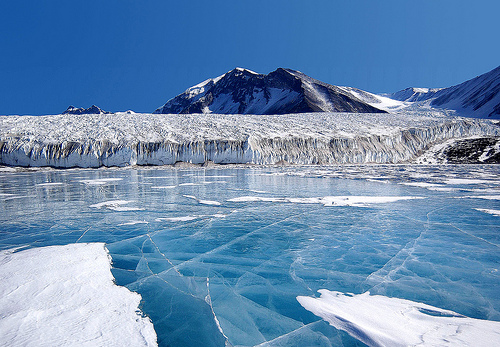This article is more than 1 year old
Under the Iron Sea: YES, tech and science could SAVE the planet
C'mon, hippies ... at least LOOK at this sensible energy option
Worstall @ the Weekend Back last week we had the news from Google bods (almost but not quite boffins) telling us there's no way to make renewable energy fuel in an advanced industrial society.
Our esteemed editor here at El Reg then pointed out that we've got a reasonable and cheap method of producing all the power we need: nuclear. The frustration comes from the fact that those who insist that we've got to have some non-carbon-emitting energy system are exactly the people who also insist that we should not be using the one non-carbon emitting (OK, low carbon, nothing is actually “zero carbon” as such) energy technology that we do have.
This brings me to another useful technology from the same subject: one the powers-that-be in the environmental movement seem to insist that we cannot use. It's very much the same cause for venting one's spleen. They want something that reduces climate change. Right, here's something which will do that. Yet we mustn't use that technology because... well, the “because” seems to wander off into nonsense, to be honest.
The technology I'm talking about is iron fertilisation of the ocean. It works, to some degree at least. It's only an increase in the occurrence of a natural process, but not only do we have people opposing its use, we've got laws stating that even researching it is illegal. It is almost as if some people don't actually want a solution.
Iron in me sea

The basic background is that there are large areas of the ocean that are essentially deserts. It's not, obviously, as with a land-based desert, a lack of water that is the problem. Rather, it's a lack of nutrients: if plankton cannot grow, then there's nothing for the next stage up to eat – thus there are no fish and so on.
Where are these deserts? This is a fun Google Map of where all the illegal fishing boats are around the world. Roughly speaking, those areas without illegal boats in them are where there ain't no fish: our deserts.
The nutrient we're most interested in here is iron. It acts as a catalyst for those tiny critters to grow. There's large areas (often said to be really only the Southern Ocean, but not quite so) where there's just not enough iron around. So, no critters and no fish. Yet we also know that quite naturally iron-rich sand can get picked up by the wind and dumped in the ocean: those pics you see of the Sahara being red are the iron in that sand. When those dust clouds do touch down in the ocean we then see algal blooms.
These aren't the same as the nitrogen-based ones that choke off the Gulf of Mexico every so often: they're far more dispersed than that. But enough that the local population of fish does rise substantially when it all happens. We also know that some of those critters don't get eaten but sink to the bottom and become rock when they die. Proper geologic sequestration of atmospheric CO2 takes place there, as the reaction that's being catalysed by the iron is the fixing of CO2 from the water into carbonates to make the critters.
There's even, would you believe it, some proof that the Bahamas exist as a result of this happening over the millennia.
So far so good: natural phenomenon, fixed carbon out of the atmosphere (the CO2 taken out of the water is replaced by that from the air) and something that we can help along by seeding more bits of the ocean with more iron.
There's also other areas deficient in silicic, acid which we can also add if we choose.
Sounds like we'd rather get on with it, eh? Except, of course, we want to know quite how efficient this is: how much carbon gets sequestrated, how much it all costs and so on. If it costs $1,000 per tonne of CO2, then it's not worth it. If it's 50 cents, then let's get on with it! That's where our problem comes in.
